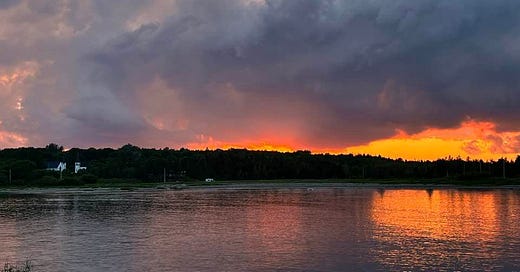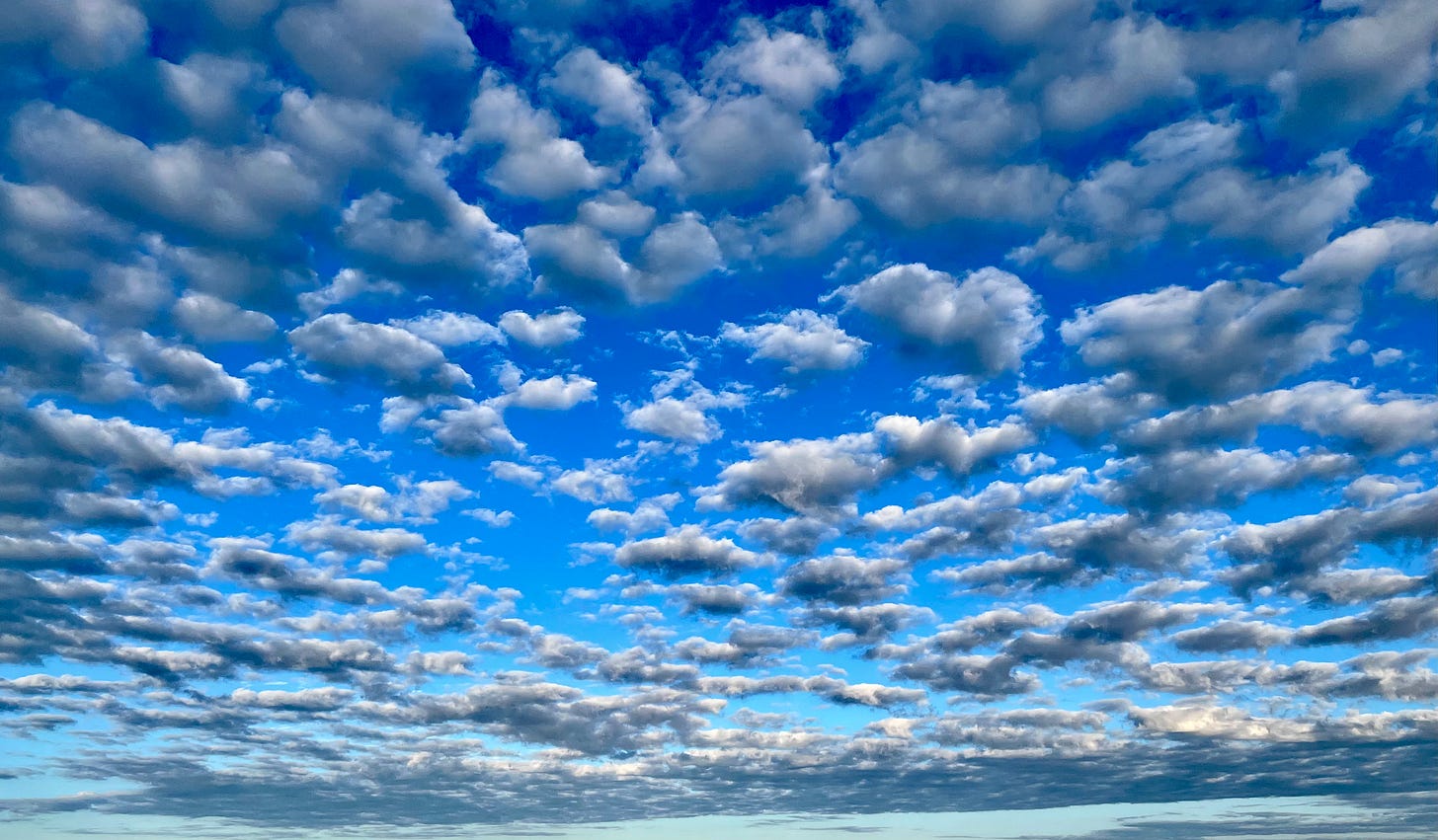What’s the (psychic) weather like in your classroom today?
Getting the psychic atmosphere right for learning is crucial.
If we think of consciousness as a unified field, then what are we to make of the ways that this field has grown more discordant and seemingly disunified in the 21st century? And how can education be a space where the harmonious coming together of minds, bodies and spirits happens, rather than a space where the disharmony is exacerbated?
In the 21st century it seems that our ancient human tendency to form antagonistic in-groups and out-groups has not only persisted but has grown ever more atomized, diffused throughout cultures and individuals all over the world.
Whereas in previous generations, we had large groups coalescing and then demonizing and fighting against other large groups (think religious, political and racial divisions, leading to wars fought by nation-states), now we live in a kind of vigilante psychic atmosphere, where there is strife and rancor even within the traditional larger social groupings.
Old prejudices and hatreds do not go quietly into the night.
Sometimes they erupt as national wars; sometimes they fester in cyberspace enclaves; sometimes they flare up in ordinary civilian neighborhoods, especially in a place like the US where it’s so easy for even a six-year-old child to pick up and wield a gun.
I know that there are many people all over the world who are actively engaged in countering violence and hatred through practices of love such as individual meditations, intentional conversations, or creating unifying, egalitarian policies and legislation.
And yet it seems that the discordance grows ever louder.
I can quiet my own mind and reach out lovingly to others in the psychic field, but once I leave my meditation cushion and venture into the real world of, say, my classroom, I feel like I am entering a minefield where the meeting of our minds has the potential to set off unexpected explosions.
Earlier I used the musical metaphor of harmony/cacophony to describe our individual and collective psychic field, but another way to think about it is via the Buddhist metaphor of psychic weather.
We can think of our psyches as landscapes across which move different kinds of weather systems, from violent tornadoes to peaceful sunny breezes. Just as the atmosphere that envelopes our planet is spread out but all connected, the little disturbances that flare up here and there affect the entire psychic field, especially now that we are so tightly networked via the World Wide Web.
When there is a storm in one classroom, it affects the whole school. A crisis at one school quickly ripples out to others. And each member of the school community brings a bit of that “bad weather” back home with them, causing the ripples to go out even further. Before you know it, the whole psychic landscape is under a roiling, angry cloud.
Photo by J. Browdy
We can see this happening in real time when, for example, a teacher is publicly “called out” for a perceived aggression. A recent example was the professor who ignited a firestorm when she chose to show a famous religious image in an art history class and quickly lost her teaching job. She’s now suing the college.
I am less interested in the old 20th century questions of academic freedom and rights—the teacher’s right to decide what happens in her classroom vs. the students’ right to a classroom free of distress. Framing the issue that way just keeps us locked into the same old dualistic, antagonistic structures.
Rather, I am wondering whether a greater sensitivity to our shared psychic field—whether in the classroom or any other social space—could help us remember that no matter who we are or what opinions we hold, we are all fundamentally interconnected on a spiritual level. We are all little waves in the vast psychic sea.
Chris Bache, in his penetrating inquiry into the psychic field of the classroom, found that he could shift the mood of the classroom by being more intentional in his presence there. When he did this, his students reported that their experience in his class rippled out in interesting, unexpected ways into their personal lives, too.
I have a feeling that this happens more than we realize. In the wake of Covid-19, some studies have been done on the surprising value of “weak social ties,” like saying good morning to the mailman or having a little exchange about the weather while waiting in a checkout line. It turns out that when we are deprived of these small positive interactions, we feel lonely and bereft.
I guess this should not be surprising, given that the worst punishment our society knows how to inflict, short of torture and execution, is solitary confinement.
The point is that each of us has the capacity to affect the “psychic weather” in our own little corner of what Pierre Teilhard de Chardin called the noosphere, the vast unified consciousness of our planet.
It’s so important to become more mindful of how we show up in class, especially in this time when our minds are constantly being clouded by others’ ideas and emotions, brought to us nonstop by the smartphones in our pockets and by our beds.
I have found myself, in recent years, repeating to students often throughout a semester, and even within a single class, the mantra “Be Here Now.” It is a huge challenge for many of them to pull themselves out of the various psychodramas they are following or engaged with, so as to bring their full attention to bear on whatever we are talking about or doing in class.
It seems a bit cliched to say, but the only way to create the exciting harmony and “flow” of a “good class” is to be fully present in the moment. And a teacher can’t do this on her own, it’s something that everyone in the room creates together, as our minds meld and we collaboratively produce ideas that none of us could have come up with all alone.
This means that yes, teachers must become more mindful of the impact on students of what we bring into the classroom, whether a mood, an idea, a word or an image.
What would have happened if the art history professor had talked about the famous historic image but, out of respect for some of her students, did not make a point of looking at it together in class? Students who wanted to look at it could have done so outside of class time, on their own.
By the same token, students must become more mindful of how their attitudes and preconceptions impact the shared psychic field of the class. All it takes is one student showing up with a defensive, self-righteous attitude, looking for opportunities to pounce on a teacher or a classmate, to disturb the psychic field of the whole class and make openminded learning almost impossible.
Getting the psychic atmosphere right for learning is crucial. Engagement and collective flow are essential.
In the past, when trying to explain the importance of participation and discussion in my humanities seminars, I used to invite students to imagine that we were all building a sculpture of ideas in the center of the table. The more people who contributed, the more intricate, complex and beautiful the sculpture would become.
Now I see that this metaphor falls short of what actually takes place in a “good class,” where, when the conditions are right, we are able to create an open, rich psychic field in which new ideas can emerge, take shape, and be developed collaboratively by the group.
When we are relaxed and engaged, able to bring our full selves to the table, our creativity is heightened, individually and collectively.
And our creativity, more than anything else, is what is urgently needed in the 21st century, if we are to move beyond the bounds of what has already been thought and achieved, to imagine and manifest a brighter future.
Photo by J. Browdy






